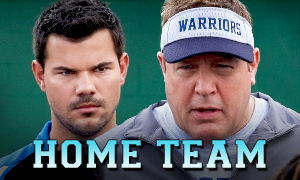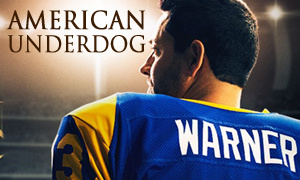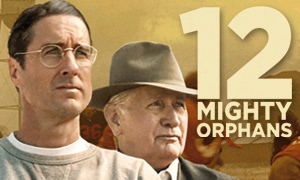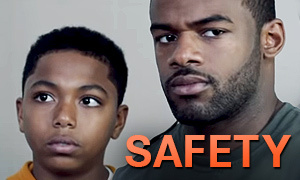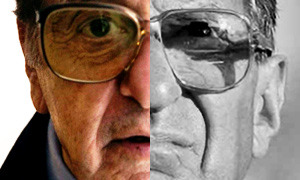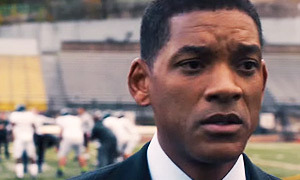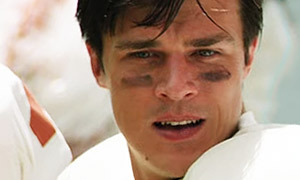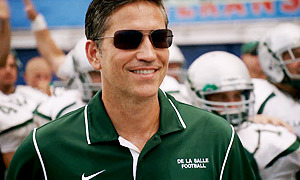12 Mighty Orphans: History vs. Hollywood
Luke Wilson
Born: September 21, 1971
Birthplace:
Dallas, Texas, USA
Rusty Russell
Born: December 4, 1895
Birthplace: Fredonia, Texas, USA
Death: December 21, 1983, Plano, Texas, USA
Vinessa Shaw
Born: July 19, 1976
Birthplace:
Los Angeles, California, USA
Juanita Russell
Born: April 22, 1904
Death: October 30, 1995, Dallas, Texas, USA
Martin Sheen
Born: August 3, 1940
Birthplace:
Dayton, Ohio, USA
Dr. E. P. "Doc" Hall
Born: abt 1872
Birthplace: USA
Death: July 7, 1949
Treat Williams
Born: December 1, 1951
Birthplace:
Rowayton, Connecticut, USA
Amon G. Carter
Born: December 11, 1879
Birthplace: Crafton, Texas, USA
Death: June 23, 1955, Fort Worth, Texas, USA (heart attack)
Bio: Newspaper Publisher
Jake Austin Walker
Born: June 24, 1997
Birthplace:
Hattiesburg, Mississippi, USA
Hardy Brown
Born: May 8, 1924
Birthplace: Childress, Texas, USA
Death: November 8, 1991, Stockton, California, USA
Bio: Mites Linebacker & Running Back
Jacob Lofland
Born: July 30, 1996
Birthplace:
Arkansas, USA
Leonard "Snoggs" Roach
Bio: Mites Left End
Slade Monroe
Birthplace:
Grapevine, Texas, USA
C.D. “Wheatie” Sealey
Born: 1923
Birthplace: Texas, USA
Death: December 11, 2010, Fort Worth, Texas, USA
Bio: Mites Quarterback
Did Coach Rusty Russell give up a better coaching job to start a team at the orphanage?
Yes. The 12 Mighty Orphans true story confirms that Rusty Russell gave up a more prestigious job at Temple High School to become a science teacher and the head football coach at Fort Worth Masonic Home and School. The home for widows and orphans had opened its doors in 1889. As head coach at Temple High School, Russell had led the football team to the state semifinals in 1926 with a 20–3 record for the season. He left Temple and became head coach at the Masonic Home in 1927. He was head coach there from 1927 to 1941. The orphanage housed roughly 160 boys and girls, and Russell's football program would eventually compete against top-level, Class A schools with thousands of students.
Had Coach Rusty Russell been an orphan himself?
No. Coach Russell's secret in the movie is that he himself had been an orphan, which is a big part of what attracts him to the notion of starting a football team at the orphanage. This is entirely fictional. In real life, Rusty Russell had grown up with his family on a farm. Jim Dent's book states that he wanted to coach at the orphanage because "the kids needed someone to believe in. Russell knew that football could jump-start a life. Football had been his ticket off the farm. Football would eventually help the orphans navigate these tough times."
Had Coach Rusty Russell been a player at the collegiate level?
Yes. From 1919–1921, Russell had played end for Howard Payne University's football team in Brownwood, Texas. He was captain of the football and basketball teams at Howard Payne, and he also lettered in track.
Was Coach Rusty Russell a World War I veteran?
Yes. The true story behind 12 Mighty Orphans reveals that Rusty Russell had been a medic in the First World War. He had been blinded when a canister of mustard gas exploded a few feet away from him during the September 1918 Battle of Saint-Mihiel. With no sight and singed lungs, he continued to crawl around the blood-soaked terrain tending to the wounded until he was placed on a stretcher and hoisted away. Doctors at a Paris hospital told him he would never see again. He remained in the hospital for over six months and by the time he was being transported back to the States, his vision had begun to return.
However, without thick lenses, his vision would never allow him to see anything more than fog and deep shadows. On his way home from WWI, he knew that he eventually wanted to become a coach and teach young people the values that his past coaches had instilled in him. Nearly blind, he would first defy doctors by becoming a star college football player at Howard Payne University. -Twelve Mighty Orphans book
Is 12 Mighty Orphans based on the book?
Yes. The movie directed by Ty Roberts is based on the 2008 book Twelve Mighty Orphans: The Inspiring True Story of the Mighty Mites Who Ruled Texas Football by sportswriter Jim Dent. He got the idea for the book after watching a documentary about Hardy Brown, a former orphan and player for the Mighty Mites team who went on to play in the NFL. Brown mentioned "the home" and Dent became curious as to what he was referring to. After Dent discovered it was an orphanage in Fort Worth, he began to research the story and knew he had a promising idea for a book. -New York Post
Had the orphanage practice field been used for grazing goats?
Yes. That's what author Jim Dent writes that Doc Hall told Coach Harvey "Rusty" Russell upon his arrival at the Fort Worth Masonic Home for Orphans in 1927. Rusty replied that he'd been around goats all his life and he had never known a goat that liked to eat rocks, referring to the poor condition of the practice field. "These are Fort Worth goats," said Hall.
Did the real team of orphans have only 12 players?
Yes. Nicknamed the Mighty Mites, the true story confirms that the inaugural team was only able to field 12 players, which meant that each player had to play both offense and defense. The real-life team is pictured below in black and white during a season when they had just over 12 players.
Did Hardy Brown arrive at the orphanage after witnessing the murder of his father?
Yes, but unlike what's seen in the movie, Hardy Brown was just four years old when he witnessed the murder of his father, a bootlegger whose rivals hated him. It was then that he was sent to the orphanage, accompanied by his brothers and sisters. The movie has Hardy arriving at the orphanage alone when he is a teenager.
Did Coach Russell really transport the players to the games in the back of an old pickup truck?
Yes. Researching 12 Mighty Orphan's historical accuracy confirms that Russell used a run-down, flatbed pickup truck that he nicknamed "Old Blue" to transport his 12-man team to the games. The truck was owned by the Masonic Home.
Is Robert Duvall's character, Mason Hawk, based on a real person?
No, at least not directly. Duvall's character, Mason Hawk, is meant to be an amalgamation of the various donors who supported the school. On a side note, the 12 Mighty Orphans movie marks the first time that Robert Duvall and Martin Sheen have appeared onscreen together since 1979's Apocalypse Now.
Was Rusty Russell's wife Juanita a teacher at the school?
While we could find no evidence in the Jim Dent book of Juanita Russell being a teacher at the orphanage, the movie states at the end that Juanita did teach English and music at the Masonic Home and inspired many "young ladies" to earn college degrees. This certainly could be true, but the book implies that she put all of her focus into raising their two children. Author Dent states that money was tight for the Russells, with Rusty making just $30 a week in the beginning. Early on, they saved money by living in a cramped, rent-free apartment on the backside of the orphanage's dining hall. As the Masonic Home's football team gradually brought in more money, Rusty's salary increased to $50 a week.
How was Coach Russell able to beat bigger teams?
After Coach Rusty Russell's physically small squad suffered a crushing defeat against a much bigger team, he adjusted his strategy and came up with new formations like the Wing T, which found the quarterback lining up behind the center. He also invented the spread offense, which requires the opposing team's defense to have to cover more of the field. The offensive strategies that Coach Russell developed focused on speed over size and were dependent on passing. By exploiting his team's strengths, the Mighty Mites left their opponents bewildered. -New York Post
Did a rival high school coach named Luther Scarborough try to stop the Mighty Mites from competing in the city district?
No. As we investigated the 12 Mighty Orphans true story, we learned that Luther Scarborough, the coach at Fort Worth Polytechnic High School, did not try to prevent the Mites from competing in the Fort Worth city district. In fact, Scarborough was not yet the coach of Poly when the real-life vote took place. Dallas native Lane Garrison, who co-wrote the screenplay, portrays Coach Scarborough in the movie.
Did the dean, Frank Wynn, take pleasure in paddling the orphans when they misbehaved?
Yes. In the 12 Mighty Orphans movie, the dean, Frank Wynn (Wayne Knight), finds satisfaction in paddling the boys when they misbehave. This is very much how Wynn is depicted in Jim Dent's nonfiction book. He was frequently abusive, beating the orphans with a rubber hose that left "purple welts and deep bruises." In real life, Wynn was in charge of the boys of ages five through thirteen, while William Henry Remmert oversaw the older boys.
Is Frank Wynn's demise in 12 Mighty Orphans based on the true story?
No. When it comes to Wayne Knight's character, the orphanage's abusive dean, Frank Wynn, the justice he receives in the movie is fictional. The real Frank Wynn drowned in the Trinity River while on a swimming excursion with some of the boys from the orphanage. Wynn hadn't realized how unpredictable the current had become after a recent rainstorm. When the other boys at the orphanage received word of Wynn's death, several of them cheered. "God is on our side after all!" one of the boys exclaimed. The filmmakers felt that Frank Wynn's actual death would be too harsh for a PG-13 film (Fort Worth Weekly).
Did a rival team accuse Hardy Brown of hiding metal plates in his shoulder pads?
This did happen to Hardy Brown, but not until years later when he was in the NFL and playing for the San Francisco 49ers. He had a reputation for being one of the hardest hitters in the league, knocking out several opponents by launching into their chins with his shoulder. Chicago Bears coach George Halas sent an official into the locker room right before the start of a game. "They made Hardy take off his shoulder pads, thinking he had some metal in there. But he didn’t," said teammate Gordy Soltau. -DenverBroncos.com
Did a rival team take out one of the Mites' star players?
In the movie, Luther Scarborough (Lane Garrison), the villainous coach of Fort Worth Poly High School, instructs one of his larger players to take out the Mites' star athlete. He breaks Mites player Doug Lord's leg in a rather gruesome scene. The circumstance surrounding Doug Lord's injury in the movie is heavily fictionalized. In the book, tackle Doug Lord suffers a bloody compound fracture to his right leg after making a "smashing tackle" in a game against Highland Park, a Dallas-based team coached by Red Hume. Doug never played football again, and as stated at the end of the movie, he married his orphanage sweetheart, Opal (pictured below). They had four children together.
Did President Roosevelt call and tell the league to allow the Mighty Mites to play Class A football?
No. It's true that newspaper publisher Amon Carter (played by Treat Williams in the movie) was friends with President Franklin Delano Roosevelt. It's also true that Roosevelt took an interest in the Mighty Mites. However, there's no mention in Jim Dent's book of President Roosevelt calling the league to tell them to let the Mites continue playing Class A football. This would have been highly irregular, given there were plenty of other more important things going on in the country.
The accusation that Hardy Brown was 19 and too old to play is also fictional. In real life, a similar accusation was levied years later in 1941 against Mites player Louis Burress. That season, the Mites were undefeated and projected to win state. Burress was found to be 19 and ineligible, which resulted in the Mites forfeiting four games, costing them the district championship. The movie's villain, Poly coach Luther Scarborough, wasn't behind the revelation. Rather, a Fort Worth resident brought the question of Burress' age to the attention of Carter-Riverside principal R.W. Records, who took it to the league. Based on incorrect records Burress' mother had given the orphanage, Mites coach Rusty Russell and the orphanage mistakenly believed Burress was a year younger than he actually was.
Did everything shown in the movie happen in Rusty Russell's first year of coaching?
No. The movie compresses the events of several years into a single season. For example, in real life, the team played for five years in Class B before being promoted to Class A. Yet, the movie finds Coach Russell (Luke Wilson) petitioning and being accepted into the top class the team's first year, 1927. The film depicts Russell coaching the Mighty Mites to within one play of the state title that inaugural season. In reality, the Mites didn't make it to the Class A state finals until 1932 (they had won a Class B title in 1931). Also, orphan Hardy Brown, who is portrayed by Jake Austin Walker in the movie, didn't play for the Mites until years later, graduating with the class of 1940.
Did the Mighty Mites make it to the state championship game in real life?
Yes, but unlike the movie, this didn't happen in the team's first year. As stated in the previous question, Coach Russell and his Mighty Mites didn't make it to the Class A state championship until 1932, five years after the team's inaugural 1927 season. The championship game ended in a 0-0 tie with Corsicana High School winning on a 20-yard penetration ruling (Texas Sports Hall of Fame). By compressing the timeline into one season, the movie in turn (and perhaps somewhat unavoidably) exaggerates the team's accomplishments, at least in terms of the timeframe in which they achieved them. That being said, in his 16 seasons as coach at the Masonic Home, Rusty Russell led the Mites to the state playoffs 10 times and to the Class A state semifinals four times. He had coached the team to a Class B title in 1931.
Did any of the orphans go on to play in the NFL?
Yes. A 12 Mighty Orphans fact-check reveals that Hardy Brown (class of 1940), a running back and linebacker for the Mighty Mites, went on to play in the NFL for the Washington Redskins, San Francisco 49ers, and Denver Broncos. He developed a reputation for being one of the NFL's hardest hitters. Dewitt "Tex" Coulter (Class of 1943) played college football at West Point and eventually played in the NFL for the New York Giants. -New York Post
Were any of the real locations used for the filming?
Yes. 12 Mighty Orphans was shot in 2019 in Fort Worth, Texas and the surrounding areas. The Fort Worth Masonic Temple was used to shoot scenes in which Treat Williams portrays Amon Carter, editor of the Fort Worth Star-Telegram. The movie's locker room scenes were filmed at Farrington Field, the location where the real-life Mighty Mites played their home games. Unfortunately, practically every high school football team in Texas has a modern field with turf, so the filmmakers recreated the Mites' home field at Gateway Park. They built a stand for fans and utilized CGI effects to make it look like a Fort Worth Depression-era stadium.
Mostly local actors portray the orphans in the movie, and due to the fact that many of them had little experience playing football, they attended a two-week football camp prior to the start of filming. Adding to the film's authenticity is the fact that some of the extras had lived at the Masonic Home and had played for the Mighty Mites. Others had played against the Mites. -Fort Worth Weekly
Is the Fort Worth Masonic Home for Orphans still open?
No. The orphanage closed its doors in 2005 (New York Post) and the building was renovated in 2006. Otherwise, the filmmakers would have shot the movie there. Instead, the Texas Pythian Home, an orphanage 30 miles away in Weatherford, stood in for the Fort Worth Masonic Home. The Pythian Home opened in 1909 and still retained much of its original character from the period. -Texas Monthly
I heard that the author of the Twelve Mighty Orphans book is currently in prison. Is that true?
Yes. Dallas sportswriter Jim Dent, who researched the Mighty Mites true story and wrote the 2008 book on which the movie is based, is currently serving a lengthy prison sentence after being arrested for his 10th DWI (driving while intoxicated) in 2015. Director Ty Roberts told the New York Post, "[Dent] is a real talented man with a lot of demons, but so many great artists are."
Does Rusty Russell's family approve of the 12 Mighty Orphans movie?
Yes. As of the movie's release in 2021, Rusty Russell's daughter, Betty Morton, was still alive and being cared for in a nursing home. She saw the movie several times, and she even hosted a screening with 80 of her friends. Director Ty Roberts, a native of Midland, Texas, said that Betty "was in tears" and couldn't believe how well the film captured her father and mother, as well as their apartment, which she said looked just like she remembered it. Betty's son (Rusty's grandson), Russell Morton, was a consultant on the film. -New York Post
